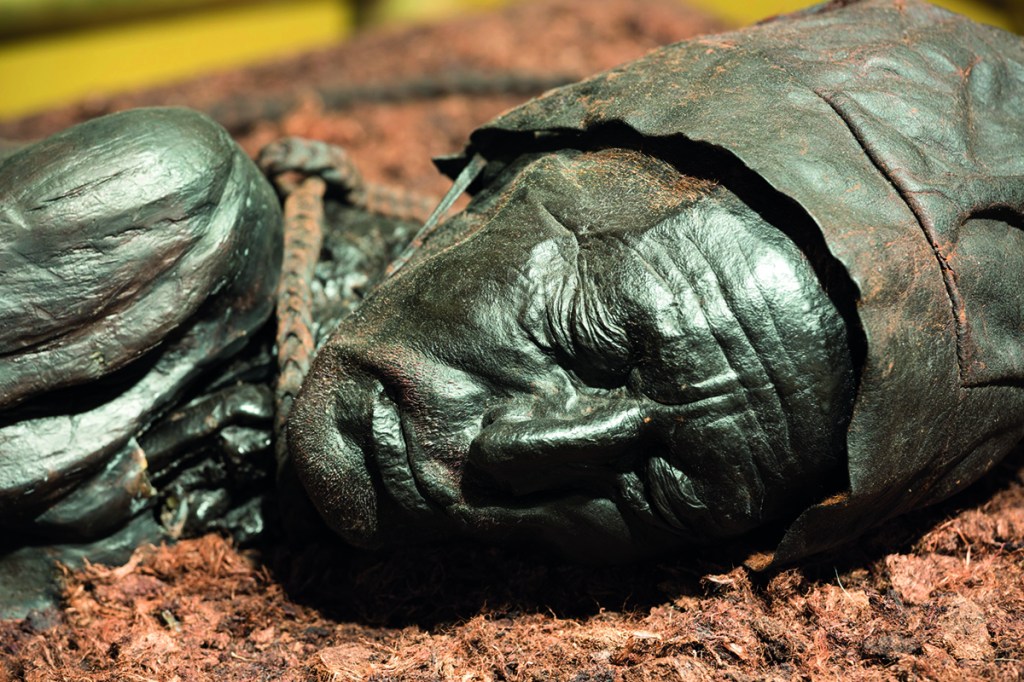Some believe All Hallows’ Eve (October 31) is adopted from a much older Celtic holiday, Samhain, that marked the change from harvest’s richness to the darkness of winter. In its modern guise, Halloween still retains something of that pagan philosophy — a time when the borders between the living and the spirit world are supposed to be at their weakest. For our pre-Christian ancestors, this sense of the in-between was felt not only in the mulchy decay of autumn but in the land around them.
Bogs were an in-between space for Iron Age Europeans. They thought that these muted open wetlands, with their sodden pools of still black water, exposed an opening to some other realm. Across Scandinavia, Germany, Britain and Ireland, the remains of hundreds of human sacrifices have been found in boglands. Peat cutters in isolated fens have discovered, often to their horror, the preserved faces of their early forebears. Often naked, regularly mutilated, the peat-dyed flesh of the bodies emerges black and reddish from the unique chemistry of the bog. There is a theory in Ireland that the country’s bog bodies may be the remains of failed kings, ritually killed on Samhain.
The remarkable and fascinating thing about bog bodies is that, although most have suffered some decomposition, a few have been near-perfectly preserved. The Tollund Man, found in Jutland in 1950, was initially mistaken for a recent murder victim. His untroubled face looks more like that of a napping drunk than of the 2,000-year-old victim of a ritualistic killing. Yet the leather rope dug deep into his neck suggests he was hanged before he was placed — naked save for a leather belt and cap — into the bog.
Natural acids, cold weather and a lack of oxygen in stagnant waters conspired to pickle these corpses. Sometimes antimicrobial plants play a part. Sphagnum moss is so effective at halting bodily decay that it was used as field dressings in World War One, stuffed into the wounds of injured soldiers to slow the spread of sepsis.
Yet not all bog people have been as lucky as the Tollund Man. The normal process of decomposition has been eerily inverted for some. Peat acid has a peculiar decalcifying effect, dissolving the skeleton while preserving the flesh. As the bodies churn away under tons of rotting vegetation, they become twisted into inhuman shapes: faces and limbs contorted like some appalling Bosch fantasy, refracted through the moldering waters of deep time.
Tacitus provides one of the few written references to the Germanic customs of human sacrifice: ‘Notorious evillers are plunged into the mud of marshes with a hurdle on their heads.’ Some have indeed been found submerged under wooden stakes.
Yet there is still so much that is unknown about bog bodies. Is Britain’s Lindow Man, discovered outside Wilmslow in 1984, the victim of a brutal Celtic ‘threefold death’, or was he merely disfigured by the shifting Cheshire earth? Are his manicured fingers a sign of ritual preparation, or was he the wealthy victim of a mugging? Answers seem to elude us. His deathly face, still shockingly human after thousands of years, belies the intangible truth of how he lived.
This article was originally published in The Spectator’s October 2021 World edition.


















